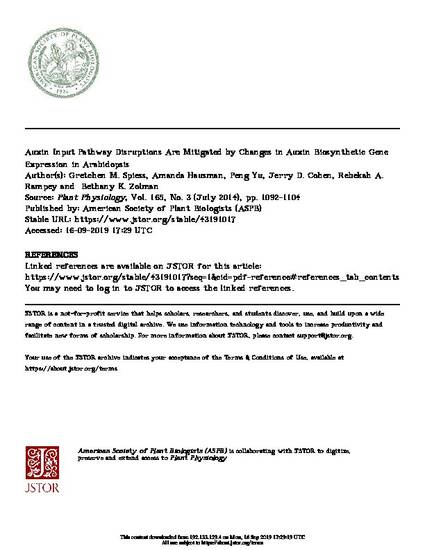
Auxin is a phytohormone involved in cell elongation and division. Levels of indole-3-acetic acid (IAA), the primary auxin, are tightly regulated through biosynthesis, degradation, sequestration, and transport. IAA is sequestered in reversible processes by adding amino acids, polyol or simple alcohols, or sugars, forming IAA conjugates, or through a two-carbon elongation forming indole-3-butyric acid. These sequestered forms of IAA alter hormone activity. To gain a better understanding of how auxin homeostasis is maintained, we have generated Arabidopsis (Arabidopsis tlnaliana) mutants that combine disruptions in the pathways, converting IAA conjugates and indole-3-butyric acid to free IAA. These mutants show phenotypes indicative of low auxin levels, including delayed germination, abnormal vein patterning, and decreased apical dominance. Root phenotypes include changes in root length, root branching, and root hair growth. IAA levels are reduced in the cotyledon tissue but not meristems or hypocotyls. In the combination mutants, auxin biosynthetic gene expression is increased, particularly in the YUCCA/Tryptophan Aminotransferase of Arabidopsisl pathway, providing a feedback mechanism that allows the plant to compensate for changes in IAA input pathways and maintain cellular homeostasis.
Available at: http://works.bepress.com/rrampey/2/
